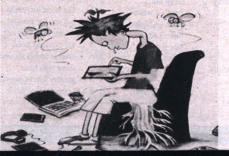题目内容
假定你是某国际学校的学生会主席李华。请你围绕“珍爱环境,保护地球”的主题用英语给全校 学生写一份倡议书,内容包括:
1. 保护环境的重要性;
2. 个人应该如何做。
注意:
1. 词数100左右;
2. 开头和结尾己给出,不计入总词数。
Dear friends,
Thanks.
Dear friends,
With the development of modem agriculture and industry,large quantities of waste gases are created every day,which are making the earth warmer and warmer.
Climate change may be a big problem,but there are many little things we can do to make a difference. For example,by turning off lights,televisions,and computers when we are not using them,we can help a lot. We can save energy by taking the bus,riding a bike,or walking. Planting trees is fun and a great way to reduce greenhouse gases.
Only by our joint efforts will we make the world a better place for us to live in.
Thanks.

